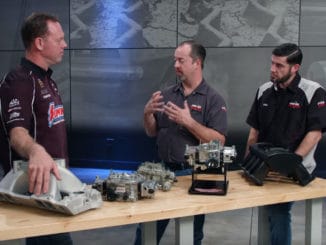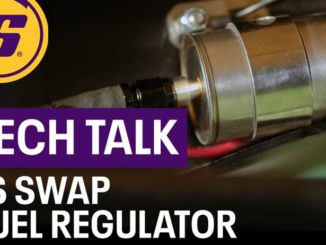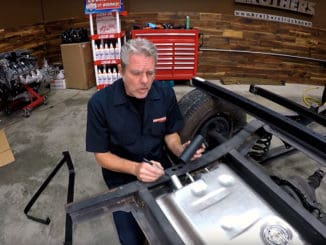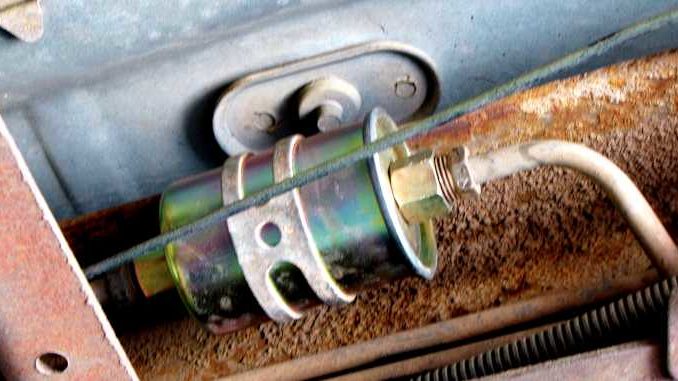
Fuel filters are found along the fuel lines, either in the engine compartment or near the fuel tank. The fuel filter’s job is to trap large particles in the fuel and stop them from getting into the engine.
If any large particles manage to get in the engine, this could cause some serious damage to the engine. So, maintaining a clean fuel filter is important to the performance of a vehicle’s engine.
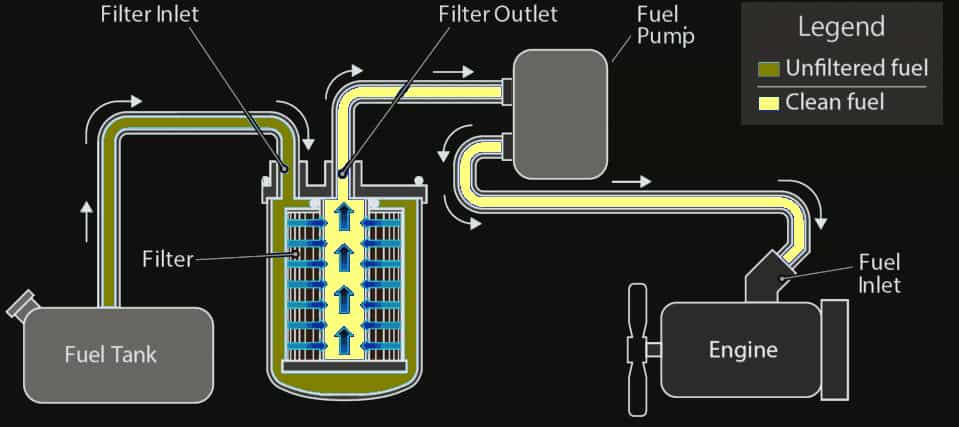
Every fuel filter is different and this is due to the differences in the fuel delivery systems. A carbureted engine (uses a vacuum to suck fuel into the engine) has quite a low-pressure fuel system.
Fuel passes through fuel-resistant rubber hoses. So, the fuel filter is made of metal or plastic, with an inlet tube out one end and the outlet tube from the other, then a hose is attached over each end with a circular clamp.
In vehicles with electronic fuel injection, the injectors will squirt fuel into each of the cylinders. Here fuel is highly pressurized by a pressure regulator. Because of the high-pressure system, the fuel lines have to be made of metal.
Sometimes in these cases the fuel injected system is placed in a low-pressure section, and can be connected to the rubber hoses with clamp (almost like that in the carbureted system). However, fuel filters are normally equipped with a threaded fitting on each end that screws into the fuel lines on either side.
There are a few precautions you will need to take when changing the fuel filter in your vehicle:
Remember that in a car with a high-pressure system, you need to relieve the pressure before you disconnect the fuel lines from the filter. In a majority of vehicles, this can be done by removing the fuse that controls the fuel pump and then idling the car until it runs out of gas.
In some cars you can just remove the gas cap. But you need to check and make sure you can do that before you do it.
Fuel filters will only work properly if they have been placed so that the flow travels in the right direction. This should be easy enough as most fuel filter are clearly marked for your convenience, with one side showing “in” and the other “out”.
The inlet should be connected to the fuel lines that come from the fuel tank (which is underneath the back of the vehicle), and the outlet should be connected to the fuel lines that go to the engine. On the odd occasion, the fuel filter may have different fittings, it can only be installed in one direction.


